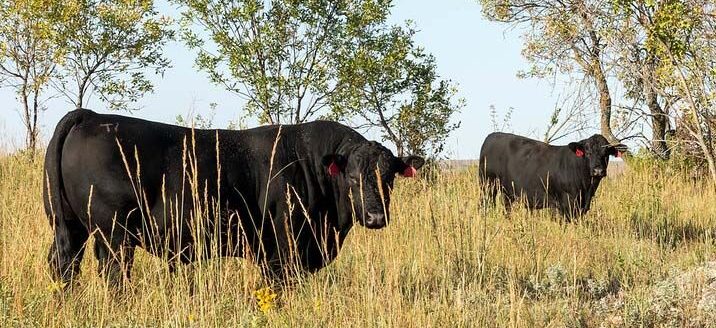NMSU Extension conducting survey on cattlemen’s bull management
Bovine trichomoniasis is endangering New Mexico’s $895 million cattle industry. It can impact a herd’s annual calving rate and even destroy a cattle producer’s genetic herd. Controlling sexually transmitted trich requires awareness and vigilance on the part of the rancher.
New Mexico State University’s College of Agricultural, Consumer and Environmental Sciences is conducting a survey to determine needs of producers in the area of bull management in regards to trich.
NMSU’s Small Farm and Ranch Task Force, which includes Extension agricultural agents for the northern counties, has received a grant from Western Region Extension Risk Management Education to conduct a survey to determine the degree that ranchers are informed about the disease and what percentage have tested their herds.
“There are 14 questions ranging from asking ranchers about their herd management practice, limitations and their general knowledge about trich,” said Tom Dominguez, NMSU Cooperative Extension Service agricultural agent in Santa Fe County.
The survey can either be filled out manually and mailed in or online at https://www.surveymonkey.com/r/nmsutrich. Dominguez stresses that the survey is completely confidential and anonymous. No personal information is to be provided.
“Hopefully this survey will determine where we need more educational programs and where we need to dispel myths,” said John Wenzel, NMSU Extension veterinarian. “We are hoping to be able to increase testing so we can find some of the hidden areas where trich still resides and then clean up those areas.”
Trich can be economically devastating.
“It is a big problem in New Mexico,” Dominguez said. “I have seen the impact to a cattle operation when this disease gets into a herd. It can impact 10 to 50 percent of a calf crop in a year.”
Trich is a parasite venereal disease that moves from infected bull to a cow, or can be transmitted to an uninfected bull from an infected cow. Neither the bull nor the cow exhibit visible symptoms, until the cow aborts a calf, or is open when given a pregnancy test.
“Of the 12,000 bulls tested by the state diagnostic service, 1.5 percent had trich,” Wenzel said. “Around the state there are hotbeds where the incidents are greater.”
In 2016, 84 premises were quarantined. That number was decreased to 42 by the end of 2017.
“This is not a single ranch’s problem, it’s an area problem,” Wenzel said. “We’ve had success in eliminating the disease when the cattle producer, New Mexico Livestock Board and veterinarians all work together.”
There is still work to be done. First finding the hotbeds and then eliminating the disease.
“The larger ranches are getting a handle on controlling trich in their herds,” Dominguez said. “It’s the smaller herds, especially those that mingle with other herds while grazing on federal land that are having the problems. We’re trying to find out what factors mostly affect the absence of testing bulls for trich.”
Wenzel and Dominguez are hoping the survey will help them identify the limiting factors that are affecting testing and what tools producers need in addressing those limitations.
“Producers have to understand the importance of testing their bulls and then what the procedure is for cleaning up their cows so the animals will not continue the cycle of infection,” Dominguez said.
Once the survey data has been studied, Dominguez hopes to apply for and obtain a second grant that will help with the control and management of the disease.
For additional information about bovine trich, visit aces.nmsu.edu/pubs/_b/B230/.
